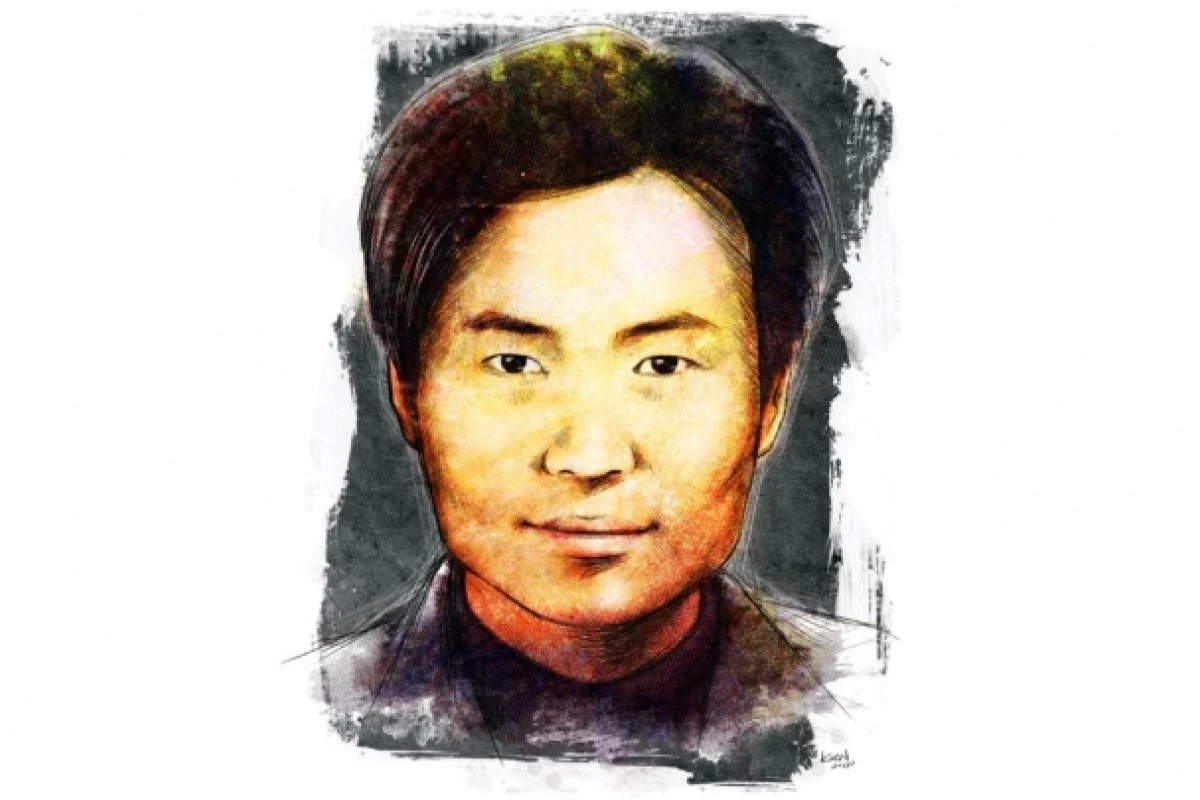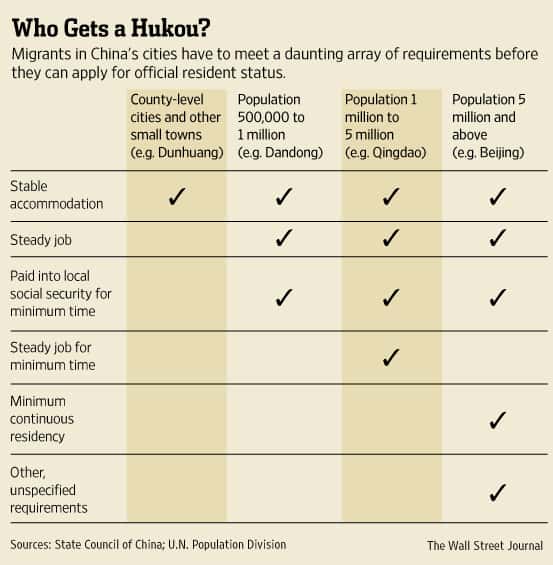Chinese Cities - Sciences Po - OGLM 3050 - 59127 - S2 2025 Clément Renaud [hi@clementrenaud.com](mailto:hi@clementrenaud.com) (use left/right keyboard arrows to navigate) --- class: inverse, center, middle ## Week 6 # 移 ## Migrations: Becoming Urban #### 11 Mar 2025 --- class: inverse, center, middle ## Character of the week # 移 [Purple Culture](https://www.purpleculture.net/dictionary-details/?word=移) / [Hanziyuan](https://hanziyuan.net/) / [CUHK dic](https://humanum.arts.cuhk.edu.hk/Lexis/lexi-mf/search.php?word=移) --- class: inverse # Some practical matters - [Fiche de présence](https://scolarite.sciences-po.fr/PROD/twbkwbis.P_GenMenu?name=homepage) - Assignments - Any questions? --- class: inverse # Today's course - assignments - migration / history of the hukou system - case studies : urban villages in Shenzhen - baishizhou - dafen --- class: middle # 1. Assignments ### 1) "Made in China" - due today - feedback ### 2) Final Assignment - read the [assignment](/chinese-cities/final-assignement.md) - form groups (10-15min) --- class: middle background-image: url(/chinese-cities/img/hukou_booklet.png) ## 3. The Hukou system ### The social impact of household registration --- ## Origins in Imperial China #### The Baojia system (保甲) - Formalized during the Qin Dynasty (221-206 BCE) for taxation and conscription - Extended under Han Dynasty (206 BCE-220 CE) with detailed census records - Throughout imperial history, served as tool for: - Tax collection - Labor control - Population statistics - Military conscription - already not really enforced #### Republican Era Transition (1912-1949) - System weakened during political fragmentation and civil war - Nationalist government attempted to modernize household registration - Japanese occupation (1937-1945) used registration for control purposes - Migration control relaxed due to wartime conditions - System existed but lacked strong enforcement mechanisms --- ## Under Mao #### Creation (1949-1958) - PRC initially established provisional hukou regulations (1951) - System primarily for census and identification purposes - 1954: First National People's Congress formalized hukou in law - Growing concerns about rural-to-urban migration - Began shift from statistical tool to migration control mechanism #### Formalization and Restriction (1958-1978) - Great Leap Forward (1958-1960) - 1958: "Regulations on Household Registration in the PRC" - definitive framework - Clear rural/urban division established - Strict control of internal migration implemented - Tied to the "iron rice bowl" system of employment and welfare - Agricultural/non-agricultural classification determined benefits - Movement from rural to urban areas severely restricted - Enforced through food ration system during Great Leap Forward and Cultural Revolution --- # Evolution of hukou  ## Reform Era Modifications (1978-2000) - Economic reforms under Deng Xiaoping created need for labor mobility - 1984: Introduction of "self-supplied grain" temporary residence permits - Rural migrants allowed in cities but with limited rights - 1992: "Blue stamp" urban hukou available for purchase in some cities .footnote[ - [Source](https://joinhorizons.com/the-chinese-hukou-system-explained/) ] --- class:inverse background-image: url(/chinese-cities/img/arriving-city.jpg) # 农民工 .footnote[ - Growing rural-urban income gap despite migration - Creation of "floating population" - migrants without local hukou rights - System maintained while accommodating economic needs ] --- ## The Sun Zhigang "incident" (2003) - Sun Zhigang, just arrived in Guangzhou to take up a job as a designer in a garment company - did not have a temporary residence card - At that time, the police could detain and deport anyone who did not have a valid residence card back to their home town - Sun was beaten to death while awaiting deportation. - Abolition of "custody and repatriation" system after - see [10 years after](https://clb.org.hk/en/content/why-it-important-remember-sun-zhigang)  --- ## Continuous Reforms - 2007: Residence permit systems introduced in various cities - 2010: Central government call for gradual hukou reform - 2011: Medium-sized cities began easing restrictions - Rural-urban divide remained but system slowly liberalized ### The 2014 reform - 2014: State Council announced significant reform blueprint - Elimination of agricultural/non-agricultural distinction - Tiered approach to reform based on city size: - Small cities: fully open - Medium cities: orderly opening - Large cities: controlled access - Megacities: strict control - Introduction of residence permit system nationwide (2015) - 2016: Goal of 100 million migrant workers obtaining urban hukou by 2020 --- ## The Points-Based Hukou System > Applicants are graded based on points earned from their age, education level, living standard, legal record and entrepreneurial ability. There are nine grading indicators, the bureau said.(from [official website](https://english.www.gov.cn/news/top_news/2018/04/12/content_281476109368678.htm) [planning](https://en.planning.org.cn/special/ccpr/news_view?id=1219))  --- ## Today Hukou System Structure - Three-tier documentation system: 1. Hukou booklet (household register) 2. National ID card 3. Temporary/permanent residence permits - Location-based access to: - Education - Healthcare - Social welfare - Employment opportunities - Housing rights - Points-based qualification systems in major cities - Digital transformation of registration processes --- ## Example: How to get a Shenzhen hukou? - rules [circa 2005](https://clb.org.hk/sites/default/files/archive/en/share/File/general/Shenzhen_hukou_regs.pdf) - policy [update](https://www.cnbayarea.org.cn/english/Policy/content/post_349861.html) - [application process](https://www.china-briefing.com/news/chinas-hukou-system-benefits-and-application-process-in-shenzhen/) - Apply on [WeChat](https://www.eyeshenzhen.com/content/2024-05/23/content_30962224.htm) - Most migrants will obtain the city’s residence permit (juzhuzheng 居住证), not the hukou --- class: middle, inverse # 4. Becoming urban - focus mostly on "internal" migrations (not emigration) - 299.73 millions migrant workers - [official stats](https://www.stats.gov.cn/english/PressRelease/202502/t20250228_1958822.html) - many different kinds of "migrants" --- class: inverse background-image: url(/chinese-cities/img/mig-pattern-map.png) .footnote.inverse[ See some good [map-based analysis](https://matthartzell.blogspot.com/2013/09/chinese-domestic-migration-map.html) / Some more [stats](https://journals.openedition.org/chinaperspectives/547?&id=547&lang=en) ] --- class: inverse background-image: url(/chinese-cities/img/migrant-workers.jpg) # Migrant workers .footnote[ - General [stats about workers](https://clb.org.hk/en/content/migrant-workers-and-their-children) - Changing trends: [Sixth Tone](https://www.sixthtone.com/news/1015180) - Image: [AFP](https://worldview.stratfor.com/article/chinas-migrant-workers-boon-and-challenge) ] --- class: inverse background-image: url(/chinese-cities/img/workers-prefab.png) # Construction workers: temporary housing .footnote[ - see [inside](https://www.khomehouse.com/prefab-house/k-type-prefab-house/prefabricated-labour-hutment.html) - [conjugal rights](https://www.globaltimes.cn/content/726506.shtml) at building sites - ] --- class: inverse background-image: url(/chinese-cities/img/ant-tribe.webp) # The "Ant Tribe" (蚁族) .footnote[ - Ant Tribe [pics](https://www.buzzfeednews.com/article/kevintang/chinas-ant-tribe-lives-in-the-worlds-most-cramped-apartments) ] --- background-image: url(/chinese-cities/img/tang-ping.jpeg) # "liying flat" (躺平) .footnote[ ## 996 工作制 - 高新园: [上班](https://www.youtube.com/watch?v=_0QxlGpBiu4) / [下班](https://youtube.com/shorts/U2gRiDZKCbI?si=F5NwF6BSjQOItyKa) ] --- class: inverse, middle # 5. Urban Villages (城中村) ### Some examples from Shenzhen --- class:inverse background-image: url(/chinese-cities/img/urban-village.jpg) ## What are Urban Villages (Chengzhongcun)? .footnote[ Former rural villages engulfed by rapid urban expansion. ] --- # Characteristics - Retain some rural land ownership and governance structures. - High-density, low-cost housing for migrant workers and low-income residents. - Often lack formal urban planning and infrastructure. - Played a crucial role in housing migrant workforce. - **Recent Changes**: - Redevelopment and demolition of urban villages. - Rising rents and displacement of residents. --- ## Some Key Features of Urban Villages 1. **Affordable Housing**: - Low rents attract migrant workers and young professionals. - Migrants often face exclusion from formal urban systems. - Urban villages serve as entry points for rural migrants. 2. **Informal Economy**: - Thriving small businesses, street markets, and services. - Mostly illegal constructions (Q: why the low buildings ?) 3. **Social Dynamics**: - Close-knit communities with strong local ties. - Provide a sense of community in unfamiliar cities. 4. **Challenges**: - Overcrowding, poor sanitation, and lack of legal oversight. --- ## Today: Challenges and Controversies - **Redevelopment**: - Government-led efforts to replace urban villages with modern developments. - Displacement of residents and loss of affordable housing. - **Cultural Loss**: - Destruction of unique urban landscapes and communities. - **Sustainability**: - Balancing modernization with social equity. ## The Future of Urban Villages - **Policy Debates**: - Should urban villages be preserved or redeveloped? - **Innovative Solutions**: - Integrating informal settlements into formal urban planning. - Ensuring affordable housing for low-income residents. > --- class: inverse, center, middle # Baishizhou (白石洲) ### Case Study of Transformation in Shenzhen --- class:inverse background-image: url(/chinese-cities/img/Shenzhen-locations-of-urban-villages-in-the-city-center.jpg) # Urbanized Villages in Shenzhen .footnote[ author: [Juan Du](https://www.e-flux.com/architecture/urban-village/169804/beyond-classification/) ] --- ## Location - Located in Nanshan District, Shenzhen - Adjacent to OCT-LOFT creative district - One of Shenzhen's largest urban villages (~120k habitants) - Five natural villages merged into one administrative unit: - [Baishizhou google maps](https://maps.app.goo.gl/zHVpTnzXdXH9FDRK9) --- ## Urban Density - 140,000+ residents in 0.6 square kilometers - Mainly migrant workers from across China - "Handshake architecture" - buildings so close you can shake hands - [some pics ](https://www.e-flux.com/architecture/urban-village/169801/palimpsest-urbanism/) - [more pics](https://metropolismag.com/viewpoints/life-dying-urban-village-photographic-journey-baishizhou/) ### Street Life https://www.youtube.com/watch?v=vEu-jPevTHc --- ## Early History **1950s:** Baishizhou as five separate agricultural villages **1970s:** State-owned factories established **1980s:** Shenzhen designated as Special Economic Zone **1990s:** Rapid urban transformation begins ## Transformation Timeline **2005:** First redevelopment plans announced **2010:** OCT-LOFT creative district established nearby **2014:** URBANUS architectural proposals for preservation **2016:** Redevelopment officially announced - [URBANUS redevelopment](http://www.urbanus.com.cn/projects/baishizhou/?lang=en) ## Recent Developments **2019:** Mass evictions begin **2020:** Demolition of major sections begins **2023:** Ongoing demolition and site clearing **2025:** New luxury developments under construction --- # The Disappearing Village ## Community Impact - Displacement of 140,000+ residents - Loss of affordable housing - Disruption of micro-economies - Erasure of cultural spaces ## State-Led Gentrification - Redevelopment valued at 100 billion yuan - Public-private partnership with LVGEM developer - Part of larger urban renewal strategy - Creating "urban-industrial heritage" narrative - See [street pics today](https://shenzhennoted.com/2023/03/10/baishizhou-blues/) - See the [redevelopment project](https://www.ravensuncreative.com/case-studies/baishizhou-redevelopment/) --- ## Handshake 302 - Artist collective documenting Baishizhou's transformation - Named after a residential unit in Baishizhou - Archive of stories, images, and memories https://shenzhennoted.com/2024/03/12/handshake-302-a-baishizhou-retrospective/ --- ## Baishizhou & OCT-LOFT - Contrasting development models - OCT-LOFT: preserved industrial buildings - Baishizhou: complete demolition approach --- ## Reflection Baishizhou represents: - Tension between development and preservation - China's rapid urbanization story - Loss of informal urban spaces - Questions about who cities are built for --- clas: inverse, middle, center # Case Study: Dafen Village ### Painting cluster in Shenzhen urban village --- background-image: url(/chinese-cities/img/dafen-village.jpg) .footnote{ [China's Van Gogh trailer](https://chinasvangoghs.com/) }